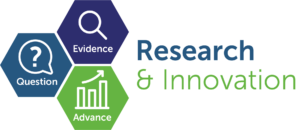Type of publication:
Journal article
Author(s):
*Elshehawy, Mahmoud; Kadambi, Madhavi; Hughes, Deborah; Clarke, Daniel; Cooper, Angela; Inani, Mohit; Goktas, Polat; Goddard, Sarah; Diwakar, Lavanya.
Citation:
Clinical Medicine. 25(6):100519, 2025 Sep 30.
Abstract:
BACKGROUND: Anaphylaxis is a severe, potentially life-threatening allergic reaction that requires urgent and effective management. The UK Resuscitation Council updated its Advanced Life Support (ALS) guidelines for anaphylaxis in 2021, emphasizing early and repeated adrenaline administration, IV fluid use, and reduced reliance on antihistamines and steroids.
METHODS: A retrospective audit was carried out to compare the management of anaphylaxis at two English NHS hospitals, namely the University Hospital of North Midlands (UHNM) and the Shrewsbury and Telford Hospital (SATH) before (2018) and after (2022/23) the ALS guideline implementation.
Adherence to NICE anaphylaxis guidance was also assessed.
RESULTS: Data from 272 patients revealed significant improvements in recognition of anaphylaxis in 2022 compared with 2018 (70.8% vs. 50%; p=0.001). The use of adrenaline and IV fluids increased, whereas the use of antihistamines and steroids declined, aligning with the new guidance. Tryptase measurement (checked in 45% patients) and specialist referral rates (67% at UHNM vs. 3% at SATH; p=0.0001) remained suboptimal at both centers. A case example highlights the risks of misdiagnosis and adrenaline overuse in patients with recurrent urticarial presentations.
CONCLUSION: Anaphylaxis management in these centers has changed in keeping with the new ALS guidelines, although antihistamines and steroids were still used in the acute management of around 50% of the patients. Adrenaline overuse may be an unintended consequence of the guideline, which needs monitoring. There may have been some improvement in anaphylaxis recognition, but serum tryptase measurement and referral to allergy specialists remain poor.
DOI: 10.1016/j.clinme.2025.100519


